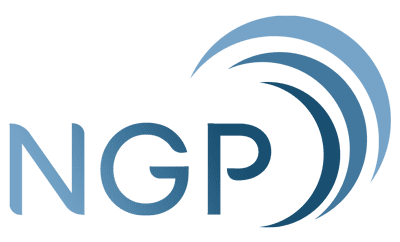In the cutthroat world of SaaS, simply offering a great product isn’t enough to guarantee conversions – it demands a relentless pursuit of web optimization to ensure customer engagement and retention, as proven successful by top-performing businesses like Slack, Canva, and Hubspot.
To replicate their success, learn the winning optimization strategies below:
SaaS businesses operate in a dynamic digital ecosystem pervaded by unique obstacles and exciting opportunities. However, the crowded landscape necessitates a dominant online presence to establish yourself as the go-to solution in your niche market – this is where web optimization comes into play, equipping you to:
- Enhance user experience (UX)
- Drive conversions
- Improve search engine ranking
Understanding Your SaaS Audience
Understanding “who” your ideal customer is enables you to create content relevant to their needs. Use the following questions to guide you:
- Who are you trying to reach?
The first step to successfully optimize your website is to identify your ideal customer: their demographics, potential pain points, and aspirations. Through this focused approach, you’ll gain insight into the type of content to create and strategies to implement that align with their needs and values.
- How do visitors interact with your website?
Once you’ve established a clear understanding of your target audience, the next step is to scrutinize their online behavior and preferences by utilizing tools like Google Analytics. This data will unveil areas needing improvement to create a more engaging and seamless website experience.
The user data can provide insights on:
- Website sections they frequently visit.
- Length of their stay on the page or content.
- Actions they typically take (e.g., adding to cart or signing up to a newsletter).
- What type of content are users seeking?
Discerning your audience’s needs equips you with the knowledge to create compelling, targeted content that deeply resonates. This could be through blog posts, product descriptions, or case studies that:
- Address their questions.
- Offer solutions to their concerns.
- Provide relevant information.
Strategies for SaaS Websites
A well-defined approach is essential to standing out and thriving in this saturated space. Here’s a list of components to implement:
- Keyword Research for SaaS Products – Identify the exact search terms and phrases your ideal customers actively use to search for solutions or services similar to yours. Then, incorporate these into your content to appear in their future searches..
- On-Page SEO
- Meta Tags and Descriptions – A meta tag and description can aid search engines in understanding the accuracy of your content, which can improve your chances of appearing higher in results for relevant keywords and increase your chances of being seen by potential customers.
- Header Tags and Keyword Use – Headings (H1, H2, H3) on your website serve a dual purpose: they organize the content for easy user navigation, and they can be used by search engines to grasp your content’s structure and key points, increasing your chances of appearing in related searches.
- Optimizing Content for User Intent – Your content should not only include relevant keywords but should aso provide the appropriate information or solution the user is seeking when they perform a search.
- Off-Page SEO
- Building Quality Backlinks – High-quality backlinks from reputable sites can help signal your content is valuable and trustworthy to search engines, which improves your site’s ranking in results.
- Social Media Engagement – Active engagement on social media platforms like Instagram can drive traffic to your website, provide you with opportunities to showcase your product, and increase your brand awareness online.
- Guest Blogging and Content Syndication – Guest blogging and content syndication allow you to share your expertise with a wider audience.
Technical SEO Considerations
- Website Speed and Performance
A fast-loading website delivers a significantly better user experience, keeping visitors engaged and satisfied. Plus, search engines favor websites that respond and load quickly, which can potentially boost your ranking in search results. To stay ahead of the curve, regularly monitor and optimize your website’s speed to prevent customers from leaving and going to competitors.
- Mobile Optimization
With the increasing use of mobile devices to access the internet, ensuring your website is mobile-friendly is non-negotiable. This ensures a seamless and user-friendly experience for all users, regardless of their device.
- Secure Sockets Layer (SSL) Certification
An SSL certification safeguards your website’s data and user information, like credit card details and login credentials. This, makes your website appear more trustworthy to users and gets you prioritized by search engines.
Conversion Rate Optimization (CRO) for SaaS Websites
- Design Effective Landing Pages – Craft clear, compelling, and focused landing pages with a single call-to-action (CTA) to convert visitors into leads or customers.
- Call-to-Action (CTA) Strategies – Use action-oriented language in your CTAs that compels users to take the desired conversion action, whether it’s signing up for a free trial, scheduling a demo, or purchasing a product.
- Simplify the Signup and Onboarding Process – Streamline the signup and onboarding process. This allows users to get started with your product quickly and easily, increasing the likelihood of conversions.
Utilizing Analytics and Tools for Optimization
- Google Analytics for SaaS Websites – Google Analytics is an indispensable tool for tracking website performance and user behavior, pinpointing areas for improvement, and guiding your optimization efforts for a better outcome.
- SEO and Performance Monitoring Tools – There are numerous SEO and performance monitoring tools available that can help you fine-tune your website and track progress over time to ensure you’re on the correct path to success.
- Heatmaps and User Behavior Analysis – Heatmaps and user behavior analysis tools provide insights into how users interact with your website, equipping you with invaluable data to make data-driven optimization decisions to improve user experience.
The success of your SaaS website hinges on a multifaceted optimization process. While initial efforts lay the foundation, growth appears when efforts in innovation and adaption implement a customer-centric approach, which keeps your website competitive, relevant, and attractive to high-quality target visitors.
Engaging with a seasoned PR and digital marketing agency will help you make this process much easier!
Harmony Adiao-Carrillo is the editorial lead of NGP-IMC.


